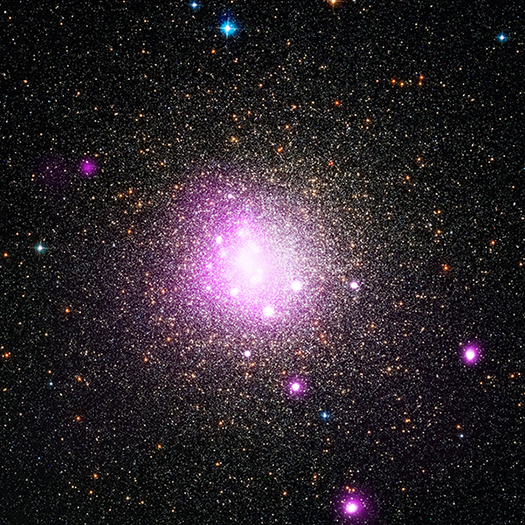NASA | MSFC | SAO | Chandra X-ray Observatory | 2015 Apr 16
The destruction of a planet may sound like the stuff of science fiction, but a team of astronomers has found evidence that this may have happened in an ancient cluster of stars at the edge of the Milky Way galaxy.
Using several telescopes, including NASA's Chandra X-ray Observatory, researchers have found evidence that a white dwarf star - the dense core of a star like the Sun that has run out of nuclear fuel - may have ripped apart a planet as it came too close.
How could a white dwarf star, which is only about the size of the Earth, be responsible for such an extreme act? The answer is gravity. When a star reaches its white dwarf stage, nearly all of the material from the star is packed inside a radius one hundredth that of the original star. This means that, for close encounters, the gravitational pull of the star and the associated tides, caused by the difference in gravity's pull on the near and far side of the planet, are greatly enhanced. For example, the gravity at the surface of a white dwarf is over ten thousand times higher than the gravity at the surface of the Sun. ...
The researchers estimate that the destroyed planet would have contained about a third of the mass of Earth, while the white dwarf has about 1.4 times the Sun's mass.
While the case for the tidal disruption of a planet is not iron-clad, the argument for it was strengthened when astronomers used data from the multiple telescopes to help eliminate other possible explanations for the detected X-rays. For example, the source does not show some of the distinctive features of a binary containing a neutron star, such as pulsations or rapid X-ray bursts. Also, the source is much too faint in radio waves to be part of a binary system with a stellar-mass black hole. ...
The puzzling source IGR J17361-4441 in NGC 6388: a possible planetary tidal disruption event - Melania Del Santo et al
- Monthly Notices of the RAS 444(1) 93 (2014 Oct 11) DOI: 10.1093/mnras/stu1436
arXiv.org > astro-ph > arXiv:1407.5081 > 18 Jul 2014 (v1), 28 Jul 2014 (v3)
